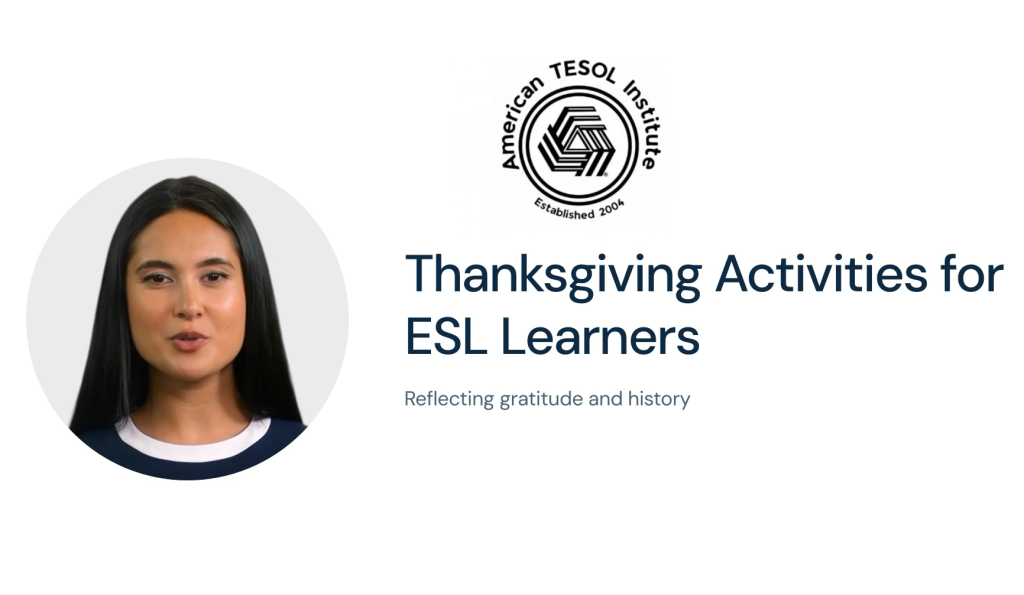Thanksgiving, a time for family gatherings, delectable feasts, and heartfelt expressions of gratitude, offers a unique opportunity for ESL learners to immerse themselves in the rich cultural tapestry of the United States while simultaneously refining their English language proficiency. By engaging in a variety of interactive and meaningful activities, students can not only expand their vocabulary and improve their grammar skills but also cultivate a deeper understanding of American traditions and values.
1. Gratitude Jar: Cultivating Appreciation
Encourage students to create a gratitude jar, a simple yet powerful tool for fostering a sense of appreciation. Provide students with decorative jars or containers and small pieces of paper. Throughout the day, encourage them to jot down things they are thankful for, whether it’s a warm cup of coffee, a supportive friend, or a sunny day. As the jar fills with expressions of gratitude, students will cultivate a more mindful and appreciative mindset.
2. Thanksgiving Vocabulary Bingo: A Fun and Interactive Learning Experience
Create Thanksgiving-themed Bingo cards featuring vocabulary related to the holiday, such as “turkey,” “pumpkin pie,” “pilgrims,” and “gratitude.” During a class discussion, introduce the new words, ensuring clear understanding through examples and real-world connections. Divide the class into groups and distribute the Bingo cards. As you read aloud sentences or descriptions incorporating the Thanksgiving vocabulary, students can mark off the corresponding words on their cards. The first student to complete a row or pattern wins the round.
3. Thanksgiving Feast: A Culinary and Linguistic Adventure
Engage students in a culinary adventure by preparing a traditional Thanksgiving meal together. Assign each student a task, such as chopping vegetables, setting the table, or preparing a side dish. As students work together, encourage them to use English to communicate, ask questions, and share their culinary experiences. This collaborative activity not only enhances their cooking skills but also strengthens their English proficiency in a practical context.
4. Thanksgiving Story Circle: Fostering Empathy and Language Skills
Gather students in a comfortable setting and share a Thanksgiving story or legend, such as the tale of the first Thanksgiving or the story of Squanto, the Native American guide who helped the Pilgrims. Encourage students to actively listen and participate in a discussion about the story, asking questions, sharing their interpretations, and drawing parallels to their own cultures and traditions. This activity promotes empathy, cultural understanding, and the ability to express thoughts and opinions in English.
5. Gratitude Letter Writing: Expressing Appreciation and Refining Writing Skills
Provide students with writing prompts or templates to craft gratitude letters. Encourage them to express their appreciation for individuals, experiences, or things that have enriched their lives. Guide them through the process of writing a formal letter, focusing on proper grammar, sentence structure, and vocabulary usage. As students share their letters with the class or a designated recipient, they not only practice their writing skills but also cultivate a sense of gratitude and connection.
The Abundance of Gratitude
The practice of gratitude is not merely a Thanksgiving ritual; it is a transformative mindset that can positively impact various aspects of one’s life. By cultivating gratitude, ESL learners can enhance their overall well-being, fostering a sense of optimism, resilience, and inner peace. As they express appreciation for the blessings in their lives, they open themselves up to new opportunities, relationships, and experiences, creating a ripple effect of abundance in their personal and academic endeavors.
Thanksgiving, with its focus on gratitude and shared experiences, provides a rich canvas for ESL learners to enhance their English language skills while immersing themselves in American culture. By engaging in meaningful activities that foster appreciation, collaboration, and creative expression, students can cultivate a deeper understanding of the holiday’s significance and enrich their language learning journey. As they embrace gratitude and express their appreciation, they not only enhance their English proficiency but also pave the way for a more fulfilling and abundant life.



